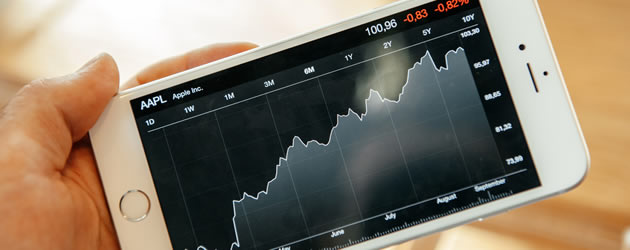
The Pound to US Dollar (GBP/USD) exchange ended the week close to a 14-month low as the American currency continued to be strengthened by a run of positive economic data releases and expectations that the Federal Reserve will be the first major central bank to raise interest rates.
Sterling weakened for a third consecutive week as the Bank of England held interest rates at the record low level of 0.5% and maintained its monthly quantitative easing programme £375 billion per month. The decision enforced economist expectations that the BoE’s policy is flagging behind the Feds.
Softening economic data out of the UK also weighed upon the Pound whilst mostly positive data out of the US buoyed sentiment towards the US Dollar.
On Friday, data showed that the UK’s trade deficit widened in September and BoE Governor Mark Carney said that any increase to interest rates would be gradual and limited. Data out of the US meanwhile showed that the USA’s unemployment rate fell to its lowest level since 2008.
‘Most of the move we’ve seen this week is based on US Dollar strength. I don’t imagine that cable’s going to carry on dropping unless Carney’s suddenly far more dovish,’ said Jane Foley, senior foreign exchange strategist at Rabobank International.
BoE Inflation Report, UK Employment Data in Focus Next Week
Next week promises to be relatively quiet in terms of data releases for the US Dollar, with only the Retail sales data being of major significance. Sterling however will experience volatility on Wednesday due to the publication of the latest unemployment, wage growth and inflation reports.
‘The UK currency will probably trade in the range of $1.58 to $1.62 over the next few months because the market has already delayed its expectations for when the Bank of England will start raising rates. The inflation report will be fairly dovish but the market is anticipating that already. Maybe we’ll go a little bit further on the downside on cable but I don’t think we are going to go into freefall,’ Foley added.
GBP/USD Exchange Rate Forecast to Edge Lower
Currency strategist Peter Kinsella also added; ‘There’s more Sterling weakness to come. [The US is producing] broadly solid data. The US curve will start to be repriced to show a more aggressive pace of Fed hiking.’
Other events that could impact upon the GBP/USD exchange rate could come in the form of geopolitical risks. With tensions once again heightening between the West and Russia over the conflict in Ukraine sentiment for safe haven assets could increase which in turn would aid the US Dollar.
In the view of one industry expert, the current uptrend in the US Dollar could prove beneficial to other nations. Clife Droke noted; ‘The strong Dollar has resulted in an interesting feedback loop: as the value of the dollar increases a combination of steady US economic growth and corresponding weakness in Europe and China make the Dollar attractive to foreign investors. Since many developing countries are dependent on commodities, Dollar strength tends to benefit the US economy at the expense of other countries’.
The Pound Sterling to US Dollar (GBP/USD) exchange rate is currently trading in the region of 1.5873
GBP/USD Exchange Rate Claws Back Losses
The Pound recovered ground against the US Dollar on Monday as the ‘Greenback’ was weakened by the release of softer than forecast Nonfarm payrolls data which spurred investors to embark on a round of profit taking.
A lack o domestic data from both the US and UK is likely to see the exchange rate experience little movement. As the session progressed the GBP/USD exchange rate was advancing closer to the 1.59 level. Economists are no looking ahead to Wednesday’s UK unemployment and inflation data, both of which are expected to show improvement. Better data is likely to send the GBP/USD exchange rate back up to the 1.60 level.
GBP/USD Exchange Rate Falls to 14-Month Low
On Thursday the Pound declined to its lowest level in 14-months against the US Dollar as the UK currency was weakened by the Bank of England’s inflation report and data which showed that UK house price growth fell sharply in October. Sterling fell as the report eased pressure on the BoE to raise interest rates. Worse than forecast US Jobless Claims data did little to prevent the GBP/USD exchange rates decline.
On Friday the GBP/USD exchange rate was trading in the 1.56 range as the inflation warning made by the Bank of England midweek continued to weigh heavily on the currency pair. Further falls are likely as economists turn their attention to the release of US Retail Sales data which are likely to confirm the strength of the US economy.
Pound Sterling (GBP) Exchange Rates- November 14
[table width=”100%” colwidth=”50|50|50|50|50″ colalign=”left|left|left|left|left”]
Currency, ,Currency,Rate ,
Pound Sterling, ,US Dollar,1.5686,
,US Dollar,1.5686,
Pound Sterling, ,Euro,1.2580,
,Euro,1.2580,
Pound Sterling, ,Australian Dollar,1.8044,
,Australian Dollar,1.8044,
Pound Sterling, ,New Zealand Dollar,1.9967,
,New Zealand Dollar,1.9967,
US Dollar, ,Pound Sterling,0.6376,
,Pound Sterling,0.6376,
Euro, ,Pound Sterling,0.7948,
,Pound Sterling,0.7948,
Australian Dollar, ,Pound Sterling,0.5542,
,Pound Sterling,0.5542,
New Zealand Dollar, ,Pound Sterling,0.5009,
,Pound Sterling,0.5009,
[/table]

